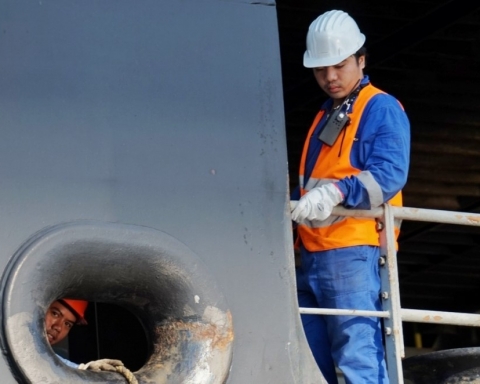The gap between the demand for and supply of seafarers is a global phenomenon. To solve the problem, at least in the short term, “there remains no other way but to temporarily allow shipping companies that can demonstrate that their seafarer vacancies had not been filled – subject to trade union authorization – to hire a percentage of non-EU seafarers on cabotage trades. According to the President of the Technical Group “Human Resources and Industrial Relations” of the Italian Confederation of Shipowners (Confitarma), Giacomo Gavarone: “For a dynamic industry like the maritime one, flexibility is indispensable to ensure vessels remain operational.” He said this during a discussion on the issue with the president of Confitarma’s Young Shipowners Group, Salvatore D’Amico.
In their opinion, the serious difficulties that the shortage of seafarers is creating for the current summer season particularly affect cabotage services and, above all, ferries.
“It is important to know,” Giacomo Gavarone points out, “that, of the over 1,100 seafarer vacancies that shipping companies haven’t been able to fill, about 1,000 are not Officers, but engine room personnel like mechanics, motormen, assistant plumbers, electricians, sailors, and a very substantial share (over 500) of cabin crew (waiters, stewards and petty officers) and kitchen personnel (crew cooks and kitchen auxiliaries).
According to Mr. Gavarone, this shortage “is due to multiple factors, depending on the job profiles: for example, the lack of specialized engine qualifications or the case of the crew cook is clearly due to entry requirements for the aforementioned profiles that are now totally outdated and the lack of specific training courses that do not allow the normal generational turnover of maritime personnel who, over time, retire. As for the other figures, particularly those who see to so-called cabin services on board, what we are having to deal with these days is an extremely complex phenomenon, caused by multiple factors.”
Mr. Gavarone points out that the surge in the number of ferries that have come into service over the last few years has led to shipping companies’ greater need for such professionals. Not only that, the major recovery in the tourist industry has understandably led many seafarers to prefer positions “ashore.”
The combined effect of these two factors is contributing very significantly to widening the gap between supply and demand.”
“It would, therefore, be important to remove all the current regulatory and operational barriers preventing young people from entering the maritime labor market,” says Salvatore d’Amico. “In addition to the longed-awaited seafarer placement reform (including updating the entry requirements for professional profiles), we have to financially support young people who want to pursue careers at sea by financing at least part of the basic training courses required to work onboard ships, along the lines of what is being done with the ‘license voucher’ for truck drivers. All these initiatives, if put in place quickly, could generate, even within a few months, new Italian employment in the maritime sector.”
Translation by Giles Foster




